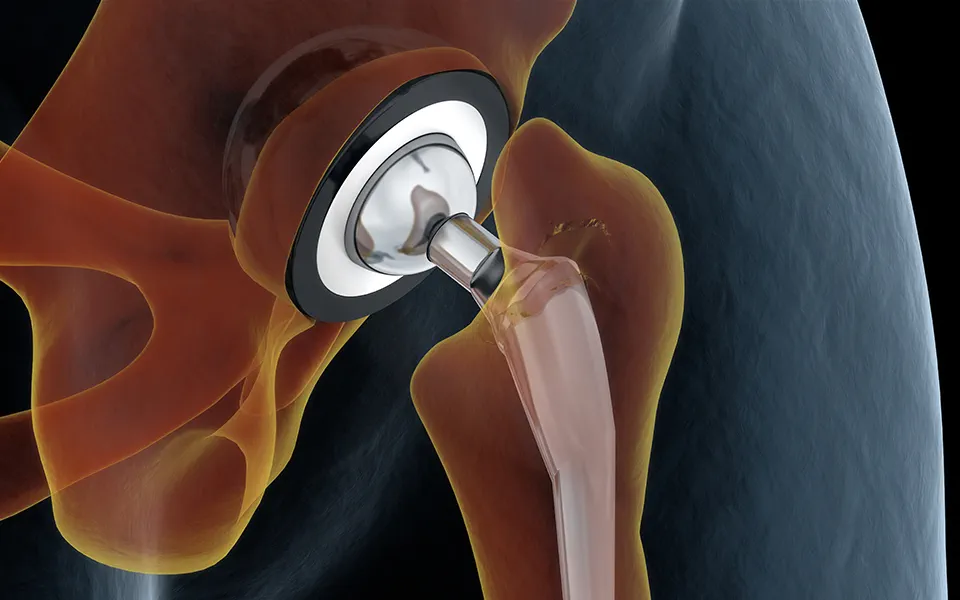Knee/Hip Replacement

Knee/Hip Replacement
Knee and hip replacement surgeries are transformative medical procedures that can significantly enhance the quality of life for individuals experiencing severe joint pain or dysfunction. Whether due to osteoarthritis, injury, or other degenerative conditions, knee and hip replacements can provide long-lasting relief and restore mobility.
Knee and hip replacement surgeries are among the most successful procedures in orthopedics, offering long-term pain relief and improved mobility for patients suffering from severe joint conditions. Whether caused by arthritis, injury, or wear and tear, knee and hip replacements can transform your life. Read on to learn more about these life-changing surgeries.
What is Knee and Hip Replacement?
Knee Replacement: Knee replacement, also known as knee arthroplasty, is a surgical procedure in which a damaged or worn-out knee joint is replaced with a prosthetic implant. This procedure is usually recommended when chronic knee pain from conditions like osteoarthritis, rheumatoid arthritis, or trauma severely limits a person’s ability to function.
Hip Replacement: Hip replacement, or hip arthroplasty, involves replacing the hip joint, where the ball of the femur (thigh bone) is replaced with a prosthetic ball and the acetabulum (hip socket) is lined with a new surface. This surgery is commonly performed to treat joint pain and immobility caused by arthritis, fractures, or congenital hip disorders1
Why Consider Knee or Hip Replacement?
Knee and hip replacements are ideal for individuals who:
- Have chronic pain that does not respond to non-surgical treatments such as medication or physical therapy.
- Experience difficulty walking, standing, or performing daily activities due to joint pain.
- Have severe joint stiffness that limits range of motion.
- Suffer from joint deformities or severe arthritis.
Benefits of Knee and Hip Replacement Surgery
- Pain Relief: One of the main reasons people undergo knee or hip replacement surgery is to alleviate chronic pain caused by joint degeneration.
- Improved Mobility: Replacing the damaged joint allows patients to regain range of motion, helping them to walk, bend, and perform everyday activities with ease.
- Increased Quality of Life: Patients who undergo knee or hip replacement surgery often experience significant improvements in their overall well-being, leading to increased energy and confidence.
- Long-lasting Results: With modern advancements in surgical techniques and prosthetic materials, most knee and hip replacements last for many years, offering long-term relief.
What to Expect During Knee and Hip Replacement Surgery
Pre-Surgery: Prior to surgery, patients undergo a thorough medical evaluation, which may include imaging tests like X-rays, MRIs, or CT scans to assess the severity of joint damage. Your surgeon will discuss anesthesia options, surgical techniques, and the expected recovery timeline.
During Surgery: Knee and hip replacements are typically performed under general or regional anesthesia. The procedure can take several hours, depending on the complexity of the surgery and whether it’s a partial or total replacement.
Post-Surgery Recovery: After surgery, most patients spend a few days in the hospital for monitoring and rehabilitation. Physical therapy is a critical part of recovery, and patients are encouraged to begin light movements shortly after surgery to enhance mobility and strengthen the joint.
Recovery Timeline for Knee and Hip Replacement
The recovery process varies for each individual, butgeneral timelines include:
- Weeks 1-2: Patients may need crutches or a walker for support. Pain management and swelling reduction are priorities.
- Weeks 3-6: Physical therapy begins in earnest, focusing on strengthening muscles and improving joint flexibility.
- Months 2-3: Many patients can walk with less assistance and return to some light daily activities.
- Months 6-12: Full recovery is expected, with many individuals returning to their normal routines and even engaging in low-impact physical activities
Risks of Knee and Hip Replacement Surgery
As with any major surgery, there are risks associated with knee and hip replacement, such as:
- Infection at the surgical site
- Blood clots or deep vein thrombosis (DVT)
- Implant wear or loosening over time
- Nerve or blood vessel damage
- Dislocation (more common with hip replacement)
Conclusion
If you’re struggling with joint pain and reduced mobility, knee or hip replacement surgery might offer the relief you need. By working closely with your healthcare team, you can determine whether this procedure aligns with your specific needs and medical history. With proper care and rehabilitation, most patients achieve a return to a more active and pain-free lifestyle.
